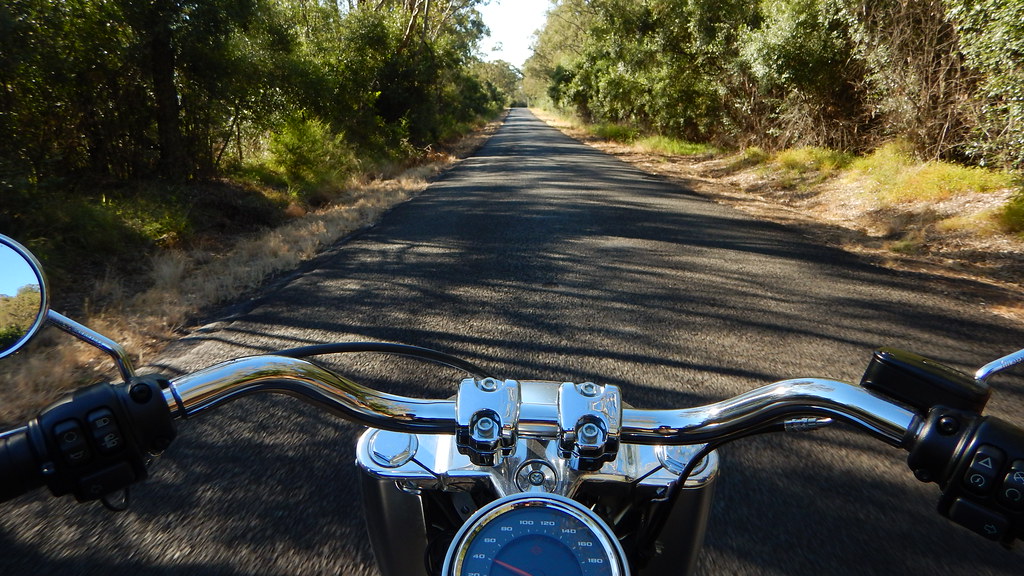 |
| The writer and mates enjoying a break at Razorback lookout. (file photo RE) |
Therefore it seems incongruous to compare the lush and verdant pastures of NSW’s Wollondilly Shire with a big grumpy pig, but someone obviously thought the region’s jagged craggy outcrops bore some similarity - and there you have it.
Those familiar with the roads in the area will know that the Hume Highway passed up and over the range as recently as 1980 whereafter the ‘new’ bypass cut out both Camden and Picton altogether. That part of the then Hume Highway was made famous by the 1979 truckies’ blockade led by Ted ''Greendog'' Stevens. A memorial has been erected at the site, just a few hundred metres north of the summit, where a scenic lookout affords panoramic views.
 |
| The momentous Razorback Truckers' Blockade of 1979 |
The Great South Road was built to allow the distribution of wool, tallow, hides
and other products to Sydney docks from Campbelltown and Picton and beyond.
The route chosen was over the Razorback Range, a jagged range with
steep cliffs and rocky spurs, an unstable, porous sandstone base that shifts
and lurches with heavy rain. A nightmare for the convicts who built it
and the travellers forced to endure its horrors for a hundred years.
and other products to Sydney docks from Campbelltown and Picton and beyond.
The route chosen was over the Razorback Range, a jagged range with
steep cliffs and rocky spurs, an unstable, porous sandstone base that shifts
and lurches with heavy rain. A nightmare for the convicts who built it
and the travellers forced to endure its horrors for a hundred years.
- Elizabeth Villy, author, The Old Razorback Road 2011.
What I discovered today was the much older route through historic Cawdor, part of John MacArthur’s once sprawling sheep and cattle farm and so-named by then Governor Lachlan Macquarie. Settlement and agriculture began here some 200 years ago and necessitated the construction of the first roads.
If you were so intrepid as to travel by automobile between Sydney and Melbourne 100 years ago*, the dusty, serpentine Old Razorback Road section (then part of The Great South Road) between Camden and Picton would have been your only navigable route. (see map above)
 |
| Detail of 1912 Government map showing Great South Road and Razorback Range north of Picton |
 |
| Section of the historic Old Razorback Road heading north toward Cawdor (RE) |
 |
| Nearing the summit of Mt Prudhoe (333m) on the Old Razorback Rd (Ed Krause) |
The 1930 deviation, constructed as part of the depression relief public works program, rejoins the former Great South Road just north of Picton at the location of the Pepper Tree Ridge BnB, originally the homestead for a large dairy farm established in the 1860s.
 |
| Workers dig culverts by hand for the 'new' Razorback Road, 1934. (RMS NSW) |
 |
| The historic Razorback Inn was first licensed in 1850 (RE) |
Two kilometres toward Picton there is the older-still Razorback Inn. Used briefly as a convict overseer’s residence, it was licensed as an inn in the 1850s and became a popular coach stop on the Great South Road.
* In the early 20th century, intercity record-breaking drives were a 'thing'. In 1912, the famous Australian (mad) motorist, Francis Birtles, drove a 20hp Flanders car from Melbourne to Sydney and then on to Queensland. In 1916 car dealer Boyd Edkins (left) drove his Vauxhall race car, known as 50 Bob, from Melbourne to Sydney in less than 17 hours.






No comments:
Post a Comment